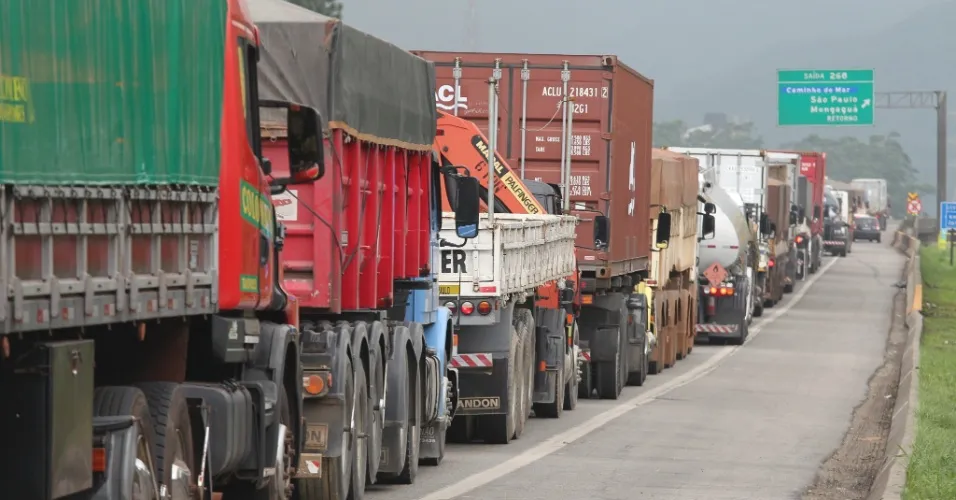
Increased harvest yields raise logistical red flags at the Port of Santos
Jul, 27, 2022 Posted by Gabriel MalheirosWeek 202230
The agricultural harvest in São Paulo is expected to rise by over 20% in 2021/2022 compared to the previous season, said the Federation of Agriculture and Livestock of State of São Paulo (Faesp). This trend raises a red flag concerning the logistics of the flow of products to the Port of Santos and capacity expansion at the port terminals in the medium and long run.
Although port operations are not the primary worry of industry experts today, some bottlenecks may require additional attention upon the arrival of recently harvested goods at the country’s largest port complex, making logistics and infrastructure experts warry of the future.
With agricultural production in São Paulo estimated at 10.33 million tonnes, the current season’s crop will increase by 19.53% compared to the last one, according to the report presented by Faesp based on the 10th survey by Brazil’s National Supply Company (Conab). Such an increase occurs because the area planted with grains in the state totals 2.52 million hectares, almost 5% more than the area seen in the 2020/2021 cycle – corn, cotton, and peanuts are the main crops.
Civil engineer and Master in Transport Engineering from the Military Institute of Engineering Luis Claudio Montenegro understands that, even though the port sector can absorb this increase of almost 20%, it does well in raising red flags for the long term.
“I have said that the main aspect that will define our competitiveness in logistics is the capacity of our logistics system. Today, we are at the limit of capacity (in the port complexes), and looking at the logistics of the Port of Santos, this is a little more worrying,” he explains.
Time to invest
In effect, when a certain percentage of the total capacity is taken, it is essential to invest in capacity enhancement. “In terms of ports and terminals, we to expand capacity when we reach roughly 60% of it. This logic leads us to conclude that we need to simplify legal certainty and remove uncertainties and bureaucracy to encourage investments, which are critical in logistics,” Montenegro concludes.
The senior consultant and business partner for infrastructure and agribusiness at GO Associados, Maurício Sampaio, also does not believe in significant problems in the port sector “in the next four months” and attributes this to investments in capacity and productivity, which provided a record volume of exports.
However, Sampaio recognizes specific bottlenecks existing in truck logistics. “Still, we are in a controlled situation, as part of these challenges can be offset by increased railroad usage.”
Queues
According to Montenegro, using capacity near its maximum encourages queues to develop. “It is not presently a huge issue that halts exports or impedes growth, but it is a chronic backlog that persists and accumulates losses over time.”
He argues that billions of reais might be “wasted” in queues. “Will the 19.53% hike result in a massive backlog of trucks or ships?” No, however, it may lengthen the chronic wait that we have. Therefore, we must constantly plan ahead of time to avoid these oscillations, with capacity projected for many years.”
For this, it is necessary to look at the issue with medium and long-term planning, though the current legal ambiguity dampens investment interest in the nation. “In my opinion, it casts a yellow light over our legal safety regulatory model to avoid uncertainties from driving away investments. [He reiterates] that all Brazil needs are investments.”
Source: A Tribuna
To read the full original article, please go to: https://www.atribuna.com.br/noticias/portomar/aumento-de-quase-20-na-safra-em-sao-paulo-acende-alerta-logistico-no-porto-de-santos
-
Dec, 30, 2022
0
Saudi Arabian investment firm buys minority stake in DP World’s flagship assets
-
Ports and Terminals
Mar, 18, 2019
0
Brazil container throughput is expected to grow at an average annual rate of 6.5% until 2023, driving ECSA growth
-
Ports and Terminals
Aug, 11, 2021
0
Santos Brasil studies liquid bulk auctions in Santos and PR
-
Ports and Terminals
Nov, 14, 2022
0
Port of Santos obtains record profit for the 3rd quarter



